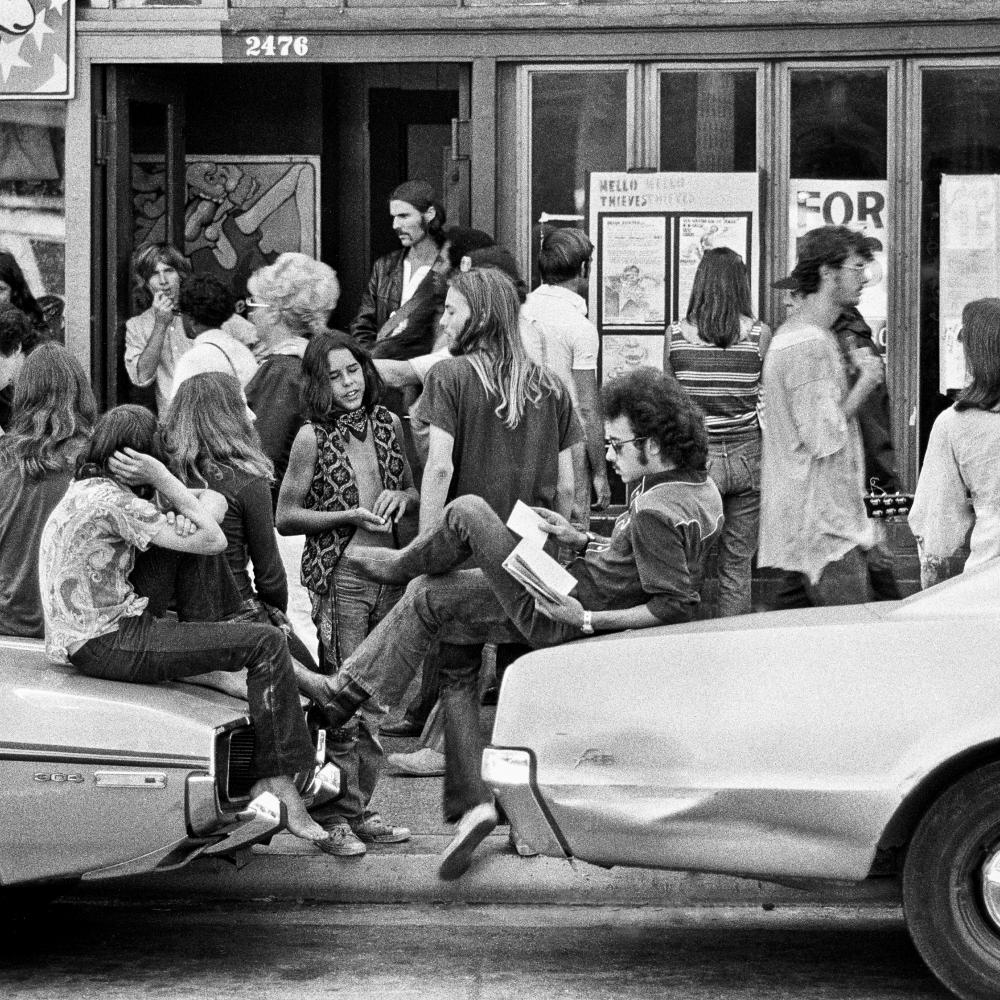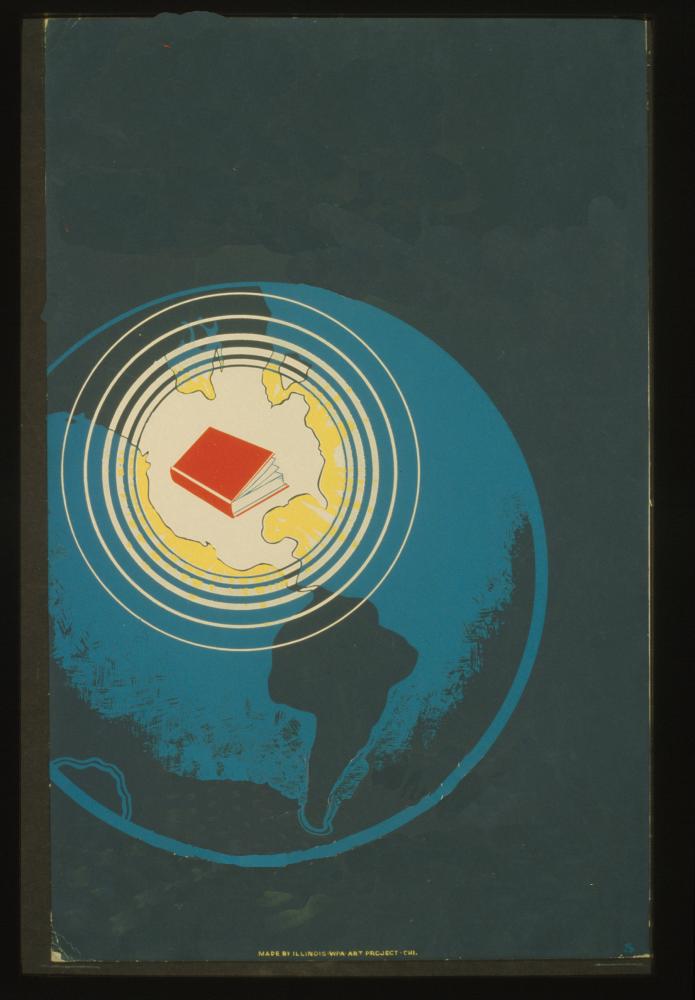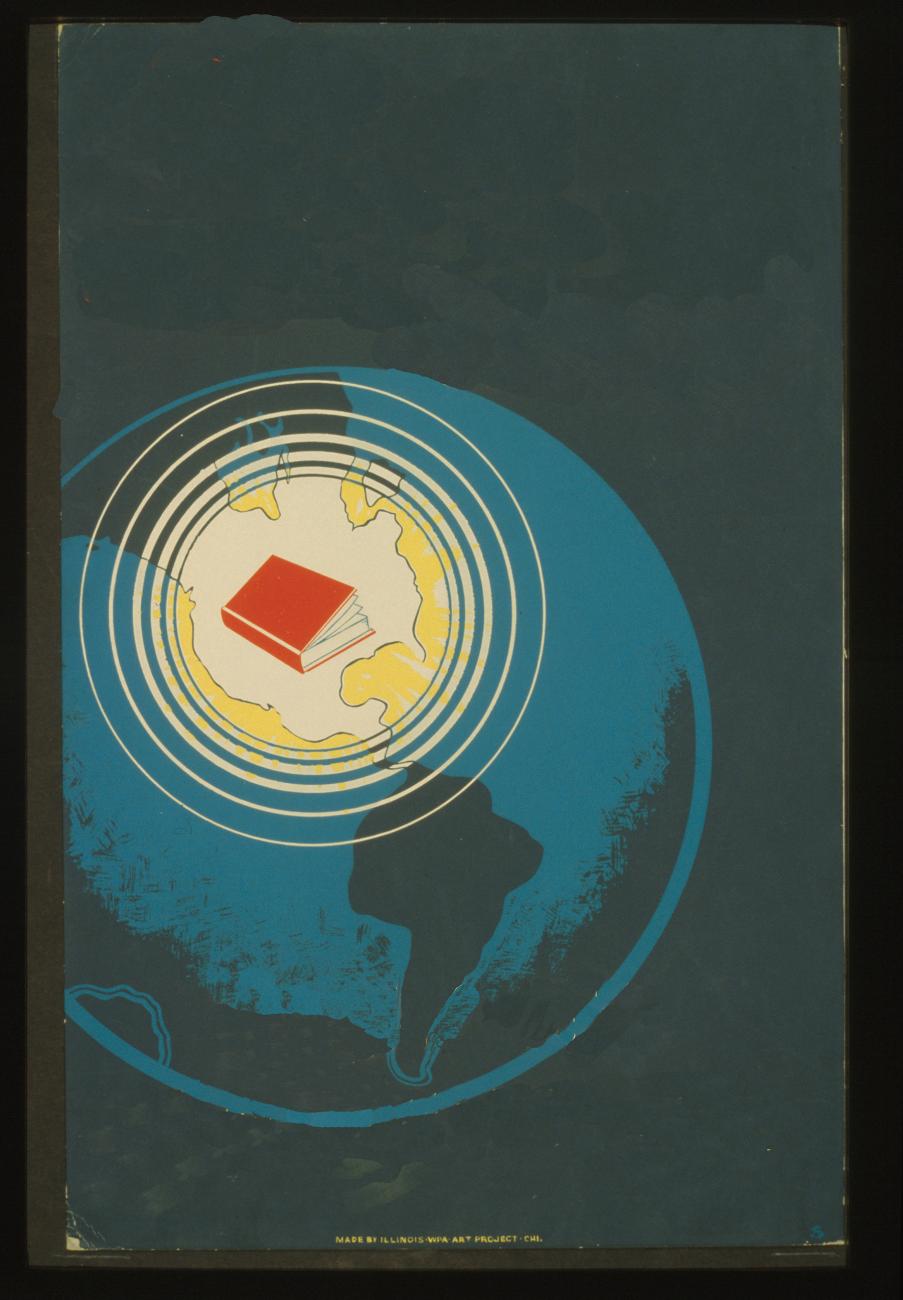This book [The Late Great Planet Earth] contains incontrovertible proof that Christianity is the one true way. Everybody should read this.
Every 3 years Hal Lindsay [sic] writes a new book denoting how the world will end in 5 years. Each subsequent book explains how he WASN’T wrong in the previous book and the world will really end in 5 years. . . . He has followed this pattern for 3 decades and is now acknowledged as “the fore-most authority on Biblical prophecy in the world today.” . . . I’m an electrician. If I had been doing my job POORLY and WRONG for 30 years I doubt I would be “the foremost authority”. In fact, I dare say I would have ceased to make a living in my chosen profession in the first 10 years.
Readers of The Late Great Planet Earth on Amazon
Long before the Left Behind books crowded the New York Times best-seller list, Hal Lindsey and C. C. Carlson’s The Late Great Planet Earth introduced millions of readers worldwide to end-times prophecy. An accessible, engaging introduction to the coming apocalypse, The Late Great Planet Earth was the best-selling nonfiction book of the 1970s: Ten million copies were in circulation by the end of the decade. It sold more than 28 million copies by 1990, an estimated 35 million by 1999, and was translated into more than 50 languages. A 1977 movie version narrated by Orson Welles ran in theaters nationwide and was later broadcast on HBO. Lindsey was “the most widely read interpreter of prophecy in history,” said one critic. Another claimed that only the Bible itself had outsold The Late Great Planet Earth.
Initially, The Late Great Planet Earth was sold primarily in Christian bookstores and through the mail. Despite its great popularity, it did not appear on best-seller lists, which tracked only sales in trade bookshops. In response, the year after The Late Great Planet Earth was published, Zondervan, Lindsey’s nondenominational evangelical publisher, placed an ad in Publishers Weekly next to the best-seller list. The headline read, “A phenomenal bestseller you will not find listed on the opposite page.”
Lindsey’s book was only one of many big sellers that did not make the lists. Between 1972 and 1977, religious book sales grew 112 percent, compared with an overall industry growth rate of 70 percent. In 1981, the New York Times estimated that religious publishing was a $1 billion-a-year business, having nearly doubled in size since the early 1970s. Moreover, it continued to grow at approximately 15 percent a year, with evangelical books representing the fastest-growing sector of that market.
Although evangelical publishing was large and growing rapidly in the 1970s and 1980s, mainstream media often ignored its influence or dismissed it. Lindsey, in particular, had a significant public relations problem. “Hal Lindsey . . . is an Advent-and-Apocalypse evangelist who sports a Porsche racing jacket and tools around Los Angeles in a Mercedes 450 SI,” Publishers Weekly said in 1977. “And even though his best-selling books of Bible prophecy warn that the end is near, Lindsey maintains a suite of offices in a posh Santa Monica high-rise for the personal management firm that sinks his royalties into long-term real estate investments.”
Scholars and intellectuals, meanwhile, condemned The Late Great Planet Earth for being theologically wrong, historically inaccurate, and aesthetically bad. “Pity those who look to Lindsey’s books to lead them through the Bible,” wrote one theologian in a book-length debunking. “Lindsey’s views represent yet another link in a long chain of mistaken interpretations of God’s Word.”
As a scholar of popular books, I was fascinated by this gap between popular celebration and frequently justified scholarly condemnation. Why would so many Americans read a bad book with such intensity and passion? Rather than dismissing them as stupid or tasteless or assuming they suffered from false consciousness, I decided to investigate how and why The Late Great Planet Earth mattered to millions of lay people. From reader reviews posted on Amazon before 2008 and comments collected from an online discussion group devoted to religion, I explored what this controversial book meant to readers in the 1970s and 1980s and how we might think about it now.
The Late Great Planet Earth was an incredibly successful “crossover” book—one of the first texts to bridge the divide between religious and secular audiences. After Lindsey’s book sold a half million copies, Bantam picked up the rights and released a mass-market edition. While the text for the Zondervan and Bantam editions was identical, the Bantam edition had a different cover—one explicitly modeled on Erich von Däniken’s Chariots of the Gods, a popular speculative history of how aliens from outer space had visited earth in ancient times. The Bantam version was shelved with science fiction, and as Publishers Weekly noted, “next to books about the I Ching and Transcendental Meditation.”
“We are getting our books out there where the unbeliever action is,” trumpeted one evangelical publishing executive about these partnerships. Evangelical houses were happy about the larger audience for Biblical truth, and paperback publishers were thrilled to have the profits.
As early as 1970, evangelical publishers were courting the youth market, an emphasis one publisher glossed as “Try Jesus, Not Junk.” Lindsey aimed his affordable, paperback edition at this new, nondenominational youth audience. “I’ve never gone for the hardback market,” he explained. “In fact, I’ve always insisted on publishing the hardback and the quality paperback at the same time. I’m writing for the youth culture—and the average young person doesn’t even look at hardbacks of any kind.”
Lindsey was no stranger to the youth movement. For seven years, he had been an evangelist for Campus Crusade for Christ, preaching to crowds of college students at the University of California–Berkeley and San Francisco State University. He told Publishers Weekly that he was “constantly challenged to not just spout theological jargon but to tell people something they could understand.”
In 1969, Lindsey began a teaching ministry near UCLA and became codirector of a 40-person residential house called the Jesus Christ Light and Power Company. Here, he honed his presentation style and material in lectures and Bible studies. His process was to “imagine that I was sitting across the table from a young person—a cynical, irreligious person—and I’d try to convince him that the Bible prophecies were true. . . . A young person isn’t hesitant to call you on something, and it forces you to come to grips with people who aren’t in the religious ‘club’.”
His colloquial way of writing set Lindsey apart. In his attention-grabbing book introduction, he wrote: “This is a book about prophecy—Bible prophecy. If you have no interest in the future, this isn’t for you. If you have no curiosity about a subject that some consider controversial, you might as well stop now.”
Lindsey began by talking about astrology and other popular forms of divining the future before turning to Bible prophecy as a more accurate, proven method. He was also mindful of the pitfalls of engaging scholarly materials: “It is necessary on the next few pages to establish some documentation from ancient history. Some people find this subject ‘a little dull,’ to say the least. If this is your case, you may wish to skim over the high points. For others, it will prove to be rewarding to check carefully the grounds upon which the historical case is built.”
Publishers Weekly called The Late Great Planet Earth “old-fashioned Doomsday preaching in a contemporary idiom” and praised Lindsey’s “folksy style.” Historians looking back call it “an apocalyptic reading of Ezekiel in funky ’70s slanguage,” and “a tale of biblical prophecy told in countercultural vernacular.”
Fundamentalists have long been interested in the apocalyptic books of the Bible—Ezekiel, Daniel, Revelation—and there is a tradition of interpreting them in light of contemporary events. American Studies scholar Melani McAlister describes most of these interpretations as “academic, inbred books aimed at audiences of the already-converted.”
Lindsey wanted to reach the not yet converted. Although his potential readers might have lacked familiarity with the prophetic scriptures that identified harbingers of the end times, Lindsey presumed that they were fascinated and terrified by the events of their own time.
Lindsey’s apocalyptic writing falls into the category known as premillennial dispensationalism, ideas espoused by John Nelson Darby, a nineteenth-century Englishman who wrote about the division of history into seven great eras or “dispensations” and the imminent return of Christ before the final dispensation, a thousand-year reign of peace on earth.
Premillennial dispensationalists believe that ambiguous scriptures describe events that will happen as the second coming of Christ approaches. In Lindsey’s version, the harbingers of the end times include the return of Jews to the Holy Land (founding of Israel in 1948); Jews regaining control of Jerusalem’s sacred sites (the 1967 Arab-Israeli War); and the rebuilding of the Temple (not yet). As the end times approach, the Antichrist, disguised as a global peacemaker, comes to power. True Christians are transported to heaven (the rapture). Seven years of tribulation—floods, famine, disease, plagues, war—follow, at the end of which Jesus returns to lead Israel’s army against the rest of the world. Christ’s victory ushers in his thousand-year reign (the final dispensation). Lindsey also wove together contemporary accounts of nuclear proliferation and World War III scenarios with the prophetic scriptures he believed predicted them, convincing lay readers that the Bible offered a framework to give meaning to what was happening in the present.
Evangelical Christians were convinced of the truth claims made by Lindsey in The Late Great Planet Earth and read it in order to reconcile disturbing events in the news with predictions made in prophetic books of the Bible. The Late Great Planet Earth made it appear that the world was completely under God’s control, and history was unfolding exactly as God intended. Readers were told they had a special role in convincing others of the truth so they could accept Jesus as their savior in time to be rescued from the impending apocalypse.
One subset of evangelicals, the “Jesus People,” particularly responded to the message. The Jesus Movement, a vast, amorphous revival and renewal movement among youth, had many faces (churches, communes, coffeehouses, free newspapers, street ministries) that shared an anti-institutional approach to religion and a fundamentalist theology. Time magazine’s 1971 cover story about the Jesus People characterized the movement as “a May–December marriage of conservative religion and the rebellious counterculture.” Jesus People were like the counterculture—placing subjective experience at the center of spiritual life, emphasizing protest against established institutions, seeking a “high” as a form of spiritual transcendence. They were unlike the counterculture, however, in that they pursued these ends not through drugs, but through Bible study and prayer.
Lindsey’s own relationship to the Jesus Movement was tenuous. The movement was centered on the West Coast in street ministries, communes, and coffeehouses that ministered to drug addicts and runaways, while Lindsey’s ministry at the Jesus Christ Light and Power Company near UCLA appealed primarily to athletes and college kids. It bore little resemblance to the controversial communes whose residents turned their backs on this world to study the Bible and evangelize on the streets. That said, The Late Great Planet Earth was unarguably the Jesus Movement’s textbook. It appeared next to the Bible in almost every movement commune, church, or coffeehouse, and was responsible for drawing in converts.
The “New Age” or “science fiction” readers approached The Late Great Planet Earth quite differently. For them, it was engaging fiction. They found its fantastic elements appealing precisely because they offered escape from contemporary life, and certainly nobody was moved to action.
One reader remembered talking about the book with his girlfriend, whose brand of countercultural evangelicalism was continuous with her attraction to “proto-New Age things,” including von Däniken’s Chariots of the Gods. An Amazon reviewer situated the book in this genre tradition for other potential readers in a review headlined “Interesting Fiction,” describing The Late Great Planet Earth as like Nostradamus and Edgar Cayce. Another person lumped The Late Great Planet Earth with The Bermuda Triangle, Philadelphia Experiment, and The Population Bomb into a category described as “sensationalist expose” [sic].
Some readers recognized the book as both religion and speculative fiction. One reader wrote that he discussed the book with his colleagues when he was in seminary (i.e., it was religion), but that it was in the science fiction section of his local bookstore. For some, its sci-fi and fantasy elements were what made the book so bad. One Amazon reviewer scoffed, “Suffice it to say that Lindsey’s take on the book of Prophecy might as well be a fantasy concocted as a science fiction novel.” Others submitted more divided reviews, explicitly invoking the two genre traditions in their critique. “Horrible Scholarship but entertaining,” insisted one Amazon reviewer, who awarded the book two stars, a loose averaging of the 0-1 stars for logic and quality of scholarship and the 3-4 stars for “entertainment value.”
Religious historian Martin Marty has called The Late Great Planet Earth a “flag book”—a book whose purpose was—at least in part—“rallying the troops.” As he surveyed the religious books landscape in 1976, Marty discerned ecumenical movements crystallizing out of reading communities around popular books by Corrie ten Boom (The Hiding Place), David Wilkerson (The Cross and the Switchblade), and Lindsey. Readers made themselves partisans of their flag book, but did not engage with those outside their reading circles. Lindsey’s premillennial dispensationalist readers, for example, were profoundly suspicious of the Pentecostal and charismatic readers of Wilkerson. Readers did not read these books for information as much as they did for “belongingness,” Marty argued. To read and talk about these books was a way of publicly claiming a particular religious identity and membership in a community of believers.
Indeed, the most striking fact about the 81 Amazon reviews I studied is the vitriolic debate between insiders and outsiders. On Amazon, most of the reviews give the book either five stars (the maximum) or one star (the minimum), with many expressing the fervent desire to award zero stars or negative numbers. Readers seem to fit into three groups: true believers who are keeping the faith, lapsed believers who have since reevaluated their commitment to Lindsey and his theology, and those who are full of contempt for Lindsey and his work.
“This is the classic Bible prophecy book of all time,” wrote one true-believer reviewer. “I first read it in the early 70s and it moved me to seek out God.”
Another explained: “The Late Great Planet Earth provides everything a Christian needs to know to drive him or her to want to spread the message of Christ’s salvation to a needy world.” Not surprisingly, many readers—whose own lives had been transformed by reading The Late Great Planet Earth—recall having bought multiple copies that they gave away to friends, family, and strangers whose faith they perceived to be lacking.
Those who disliked the book were equally impassioned. A one-star review described The Late Great Planet Earth as: “Idiotic, gullible, credulous, superstitious, fanatical, irrational, etc.” “Pure bunk” proclaimed another: “I read this book in 1971. It was pure bunk back then and it’s even purer bunk 35 years after its publication. All of its ‘predictions’ didn’t happen. Yet the author continues to be admired in fundamentalist circles. What does that tell you?” Some reviewers characterized Lindsey as a snake-oil salesman and a scam artist.
Many of the book’s readers had first encountered it when they were teenagers. Sometimes the book had the endorsement of church leaders. One person remembered, “This book practically replaced the Bible in the fundamentalist church I attended in the 70’s.” In other cases, the book circulated underground among the young people, although it was roundly condemned by the minister. One reader explained that it helped create opposition between parents and elders and “truly Christian” youth.
The effect of Lindsey’s book was to move the emphasis from the church as an institution to the individual believer. Lindsey distinguished between the apostate church (“visible, physical gathering of people who may call themselves Christians”) and the true church. He argued that apostate churches could be of any denomination, and he urged readers to embrace true belief, however “anti-church,” or “narrow-minded” or “dogmatic” that true belief might be labeled.
Lindsey placed particular emphasis on the distaste many young people felt for organized religious life: “In talking with many young people from various backgrounds I have found that the institutional churches are viewed by them as a reflection of all they despise in what they consider materialistic, hypocritical, and prejudiced elements within our American culture.” Lindsey insisted that the failing here was all the church’s. Young people eagerly received Jesus, when they realized that the alternatives—“welfarism, socialism, or drugs”—would not provide lasting meaning for their lives. Churches, Lindsey maintained, either could not communicate the truth about Jesus in ways young people found compelling, or they were not seeking the truth at all. As a consequence, they could not “compete” with radical political organizations which (falsely) promised the salvation young people were seeking.
I found that fear was often expressed in the Amazon reviews I analyzed. One reader explained that “this book is a sure-fire prescription for scaring the daylights out of young kids (I know, I was one of them).” Some of the adult Amazon reviewers reflect back on the reading of their teenage selves: “This book’s strength lies in its ability to terrify a non-believer into becoming a Christian, and probably millions of non-Christians (or luke warm [sic] Christians) out of stark fear became believers, some even pastors and missionairies [sic].” Although some of Lindsey’s supporters defended him against charges of being a fearmonger, others suggested fear-mongering was necessary: “THERE IS SOMETHING YOU SHOULD BE AFRAID OF, IT’S CALLED HELL.”
Many were concerned for their own salvation. For others, the fear was for the nation and the world. The Cold War, environmental degradation, the arms race: They all contributed to a millennial panic that was ahead of the actual millennium. One reader recalled, “I can remember reading Lindsay [sic] type stuff and it was totally conflated with fear-mongering about the Russians invading and taking over the U.S. I can remember waking up from a nightmare about this.” Another wrote, “I recall thinking that the Pope’s near assassination, followed by Reagan’s near assassination were surely some sort of harbinger of the end.”
Some remember not fear, but excitement. One reader who wrote to me recalled that as a teenager he “found the idea that we were soon to be taken out of this world absolutely thrilling. . . . I was a skinny kid with big glasses and I wasn’t really happy with myself or very confident with peers. Man, did I look forward to an end to all that.”
In his book When Time Shall Be No More: Prophecy Belief in Modern American Culture, Paul Boyer argues that a belief that the end of the world is inevitable—held by a large number of Americans and American policymakers—profoundly shaped American foreign policy at the end of the Cold War. If the end of the world was inevitable (it was God’s will), what was the point of trying to sign new nonproliferation treaties? Similarly, Melani McAlister argues in Epic Encounters: Culture, Media, and U.S. Interests in the Middle East since 1945 (2001, 2005) that Lindsey’s book politicized white evangelicals. Although they had largely eschewed worldly politics to attend to personal sin and salvation in the wake of the Scopes trial in the 1920s, evangelicals were admonished by Lindsey that understanding the Bible required their engagement with contemporary Middle East politics.
While texts like The Late Great Planet Earth had implications for nuclear nonproliferation and foreign policy, they also had an impact on miserable kids who desperately wanted out of their suffocating high school worlds, young men whose countercultural girlfriends were into both Jesus and New Age stuff, and people who wanted to fit into church youth groups where The Late Great Planet Earth had replaced the Bible.
However diverse their responses, ordinary readers did not seem to care much about theological correctness or historical accuracy or aesthetic beauty, issues of great importance to scholarly readers. Like the debates over other popular religious books, the controversy over The Late Great Planet Earth was a case of scholarly readers and nonprofessional readers talking past each other about what books are good for.
Intellectuals worry about what these texts say, but ordinary readers focus—quite pragmatically—on what they do. Popular readers care if texts work—that is, make them better people, manage their fears and anxieties, and make them feel as if their lives matter in the larger scheme of things. Uninspired prose and problematic theology aside, The Late Great Planet Earth was nonetheless a useful book for lay readers navigating the anxious decades after 1970.




